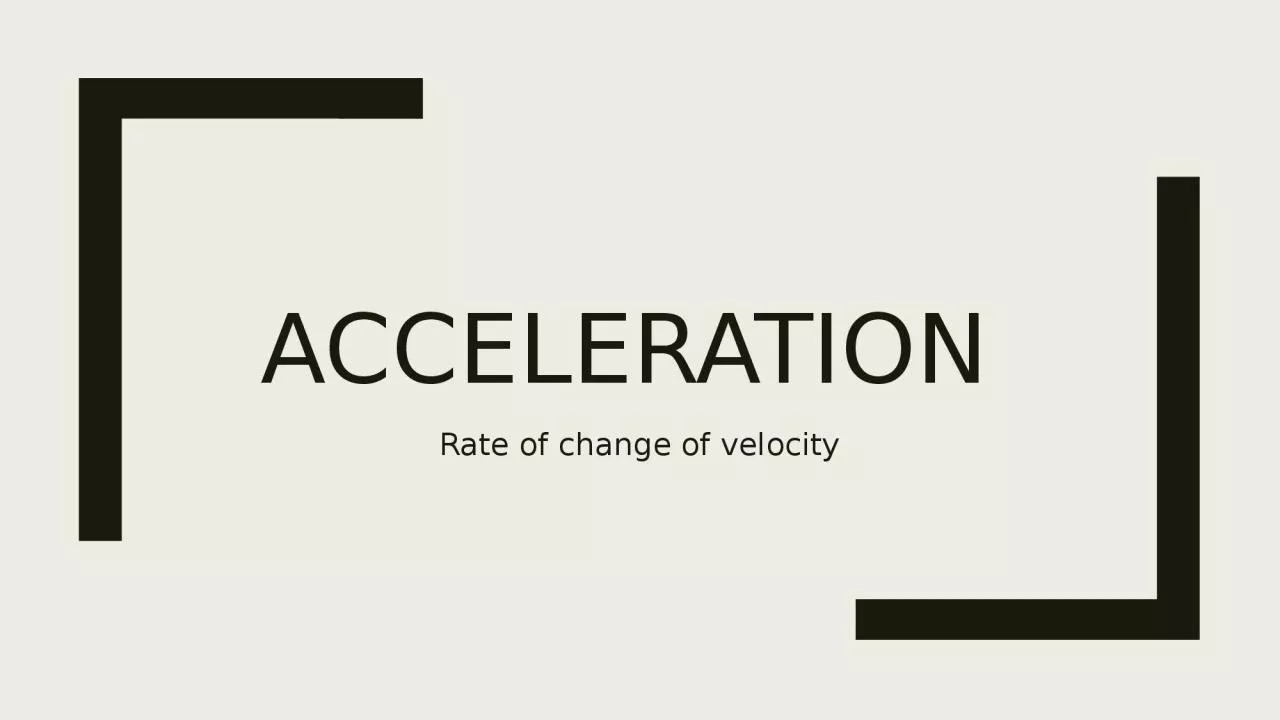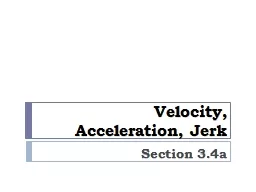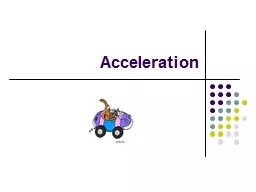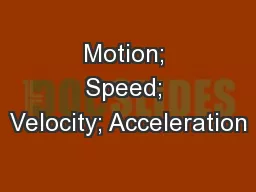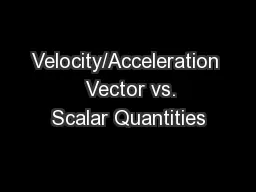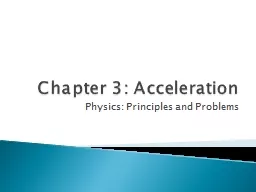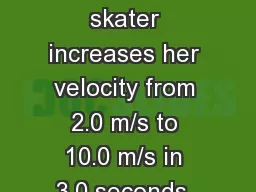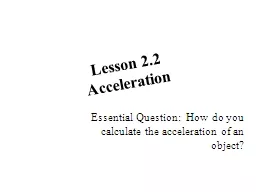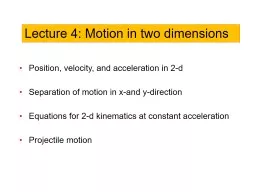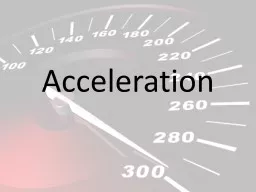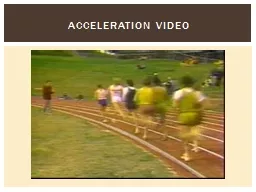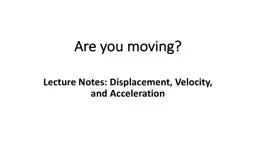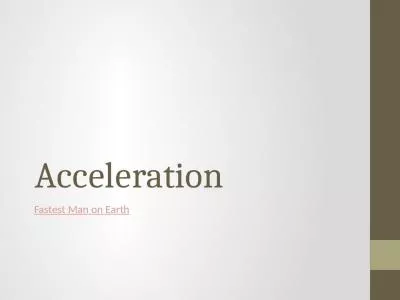PPT-Acceleration Rate of change of velocity
Author : grace3 | Published Date : 2023-09-25
Defination In nonuniform motionthe velocity of a body changes with time For example when a train leaves or approaches the platform its velocity changes with time
Presentation Embed Code
Download Presentation
Download Presentation The PPT/PDF document "Acceleration Rate of change of velocity" is the property of its rightful owner. Permission is granted to download and print the materials on this website for personal, non-commercial use only, and to display it on your personal computer provided you do not modify the materials and that you retain all copyright notices contained in the materials. By downloading content from our website, you accept the terms of this agreement.
Acceleration Rate of change of velocity: Transcript
Download Rules Of Document
"Acceleration Rate of change of velocity"The content belongs to its owner. You may download and print it for personal use, without modification, and keep all copyright notices. By downloading, you agree to these terms.
Related Documents

